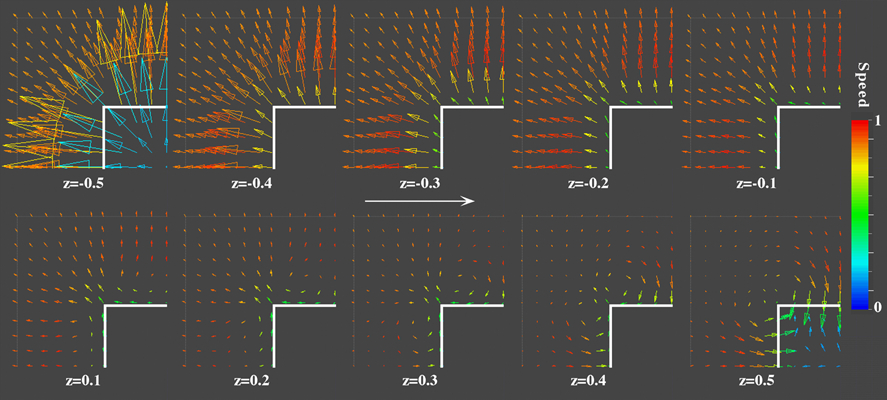Motivation Simulation of flow over cubes is relevant to a large number of industrial applications such as: convective cooling of microprocessor chips or buildings, drag and noise reduction in cars and trucks, or control of wind-induced vibrations in highrises. The cube geometry is very simple, yet the flow around it manifests interesting 3-D structures that are prominent in more complex configurations. A little about the method The following are some grid-free simulation results at Reynolds number 100 (based on the cube side and the free-stream velocity), flowing from left to right. Refer to [6] for details and for the case of Reynolds number 1,000.
The computational elements are vorticity weighted and hence are called vortex elements. Note that these vortex elements are concentrated within the boundary layer of the cube faces and the wake behind the cube, where vorticity is significant. Outside this region, where the flow is essentially potential, no elements can be seen. More importantly, the element locations are not assigned a priori by the user, but determined dynamically by the flow itself. Some physics The wake behind the cube, while symmetric during the early stages of its formation, is highly unsteady and asymmetric due to the introduction of random, noise-level disturbances to the flow field. If the flow is in the stable regime; e.g., laminar duct flow, the perturbations do not grow. However, if the flow is inherently unstable the random perturbations give rise to unsteady dynamics. The fundamental non-dimensional frequency (Strouhal number) of oscillation of the near-field wake is found to be S = 0.143 for the cube,which is close to the shedding frequency of the flow over a square rod (S = 0.148-0.153) at the same Reynolds number. Note that although the instantaneous flow over the cube is non-symmetric, its time-averaged topology is symmetric.
|


